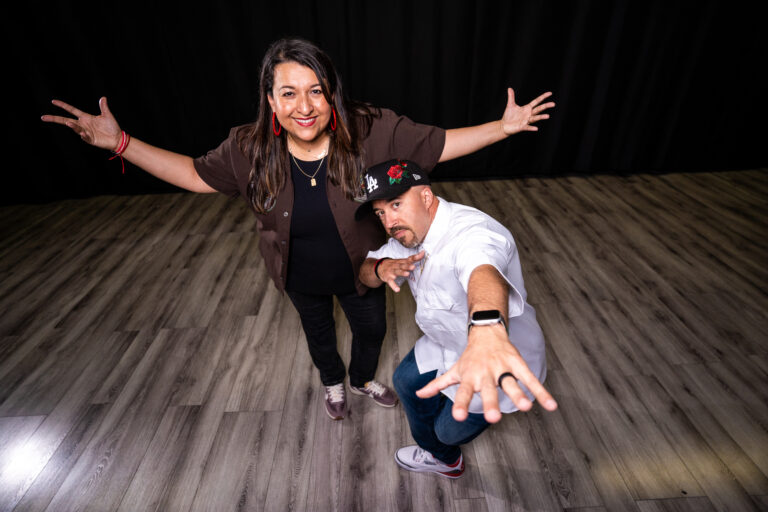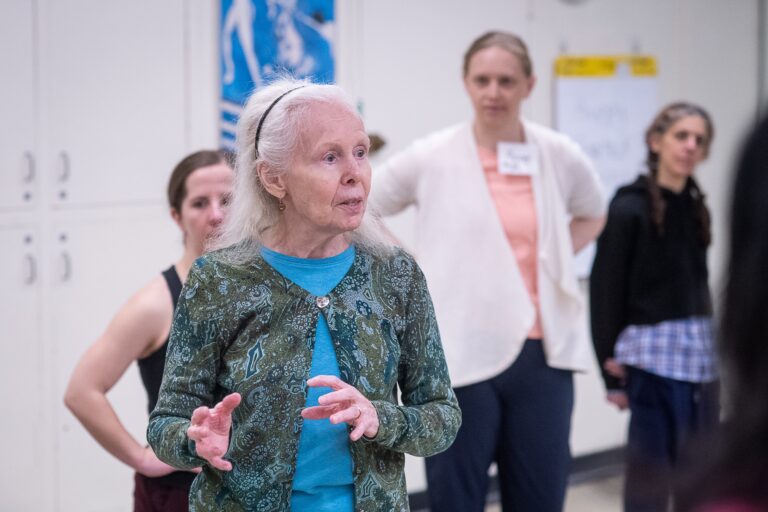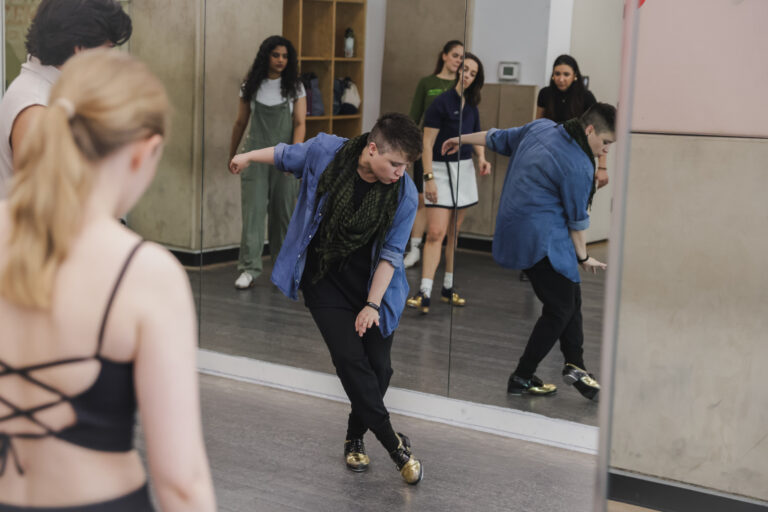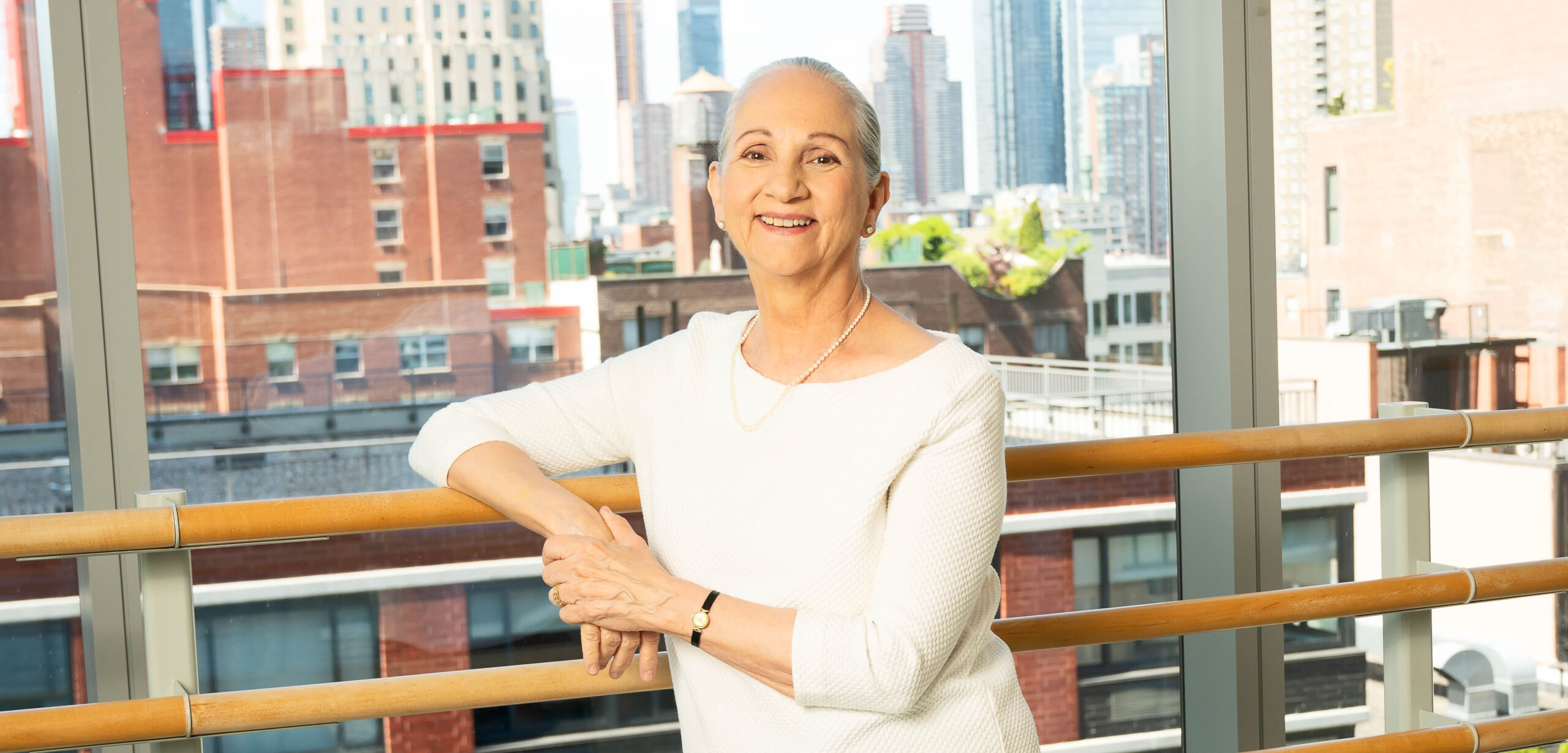
The 2023 Dance Teacher Awards will take place on Thursday, August 10 at the Sheen Center for Thought & Culture in New York City, and you’re invited! Click here to buy tickets.
It’s not an exaggeration to say that Ana Marie Forsythe has been teaching for most of her life. Now 79, she first taught dance in her teens, just a few years after beginning her own dance training. She got her start in ballet, but soon switched to Horton technique, a movement language developed in California in the 1930s and ’40s by the choreographer Lester Horton. It is in that technique that she found the freedom and power to really move the way she wanted to. She quickly found a second calling in helping others to develop that same power and range of movement in themselves.
Watching her teach, it’s obvious that Forsythe has a natural gift: Her approach combines authority with kindness, clarity with generosity and deep understanding. “What’s special about her is that sensitivity and understanding that she has, the way she knows just how much to push without making you feeling defeated,” says Tracy Inman, co-director of The Ailey School, where Forsythe leads the Horton department. “You always feel like you can get it, you will get it.”

Forsythe was Inman’s teacher when he was an aspiring dancer at The Ailey School in the ’80s. He then went on to dance in the Alvin Ailey American Dance Theater, and is now co-director of the school. When Inman arrived at Ailey, Forsythe had already been there for a decade, since 1973. She became the chair of the Horton department in 1979, and held the title of program administrator for the school’s joint BFA with Fordham University from its inception (1998) until 2011. And she’s still there, at The Ailey School, running the Horton department, teaching four days a week, and holding a yearly two-week pedagogy workshop for Horton teachers.
To her instinctual understanding of what dancers need, she has added the wisdom and insight of experience. “With so many years of teaching, she just knows how to get the dancers from one stage to the next,” says Inman. “Everyone swears by her teaching, her videos, and her book, The Dance Technique of Lester Horton, which I like to refer to as the ‘Horton bible.’ ” In class, her observations, delivered in a calm, easy tone, reflect this acquired knowledge. When something doesn’t quite work, she doesn’t worry. As she recently told one of her students, “Let’s just do it this way for now, and next week we’ll be able to go a little further.”
Forsythe took her first dance class at the age of 10 at the Newark Ballet Academy in New Jersey. Just two years later, she was introduced to Lester Horton’s technique by a young dancer, Joyce Trisler, who had been a member of Horton’s troupe in California before he died in 1953. Trisler became a key figure in Forsythe’s life, both as a teacher and a mentor but also as a colleague. Trisler asked her to join her dance company in 1958, when Forsythe was just 14. And Forsythe began substitute-teaching for Trisler soon after. A few years later, she took over Trisler’s Friday classes at The Ailey School. Forsythe also danced with Sophie Maslow, of the New Dance Group, for a few years, and started her own company in the ’70s. But teaching was the constant, and The Ailey School became her home. She has been there for half a century.
In her time there, she has trained countless dancers, as well as teachers who have gone on to spread the Horton technique around the country and the world. She has taught in Europe and in Japan, Brazil, and Cuba. And she has co-authored several books on Horton technique, including the definitive and comprehensive The Dance Technique of Lester Horton, along with a series of DVDs explaining and illustrating the technique in great detail.
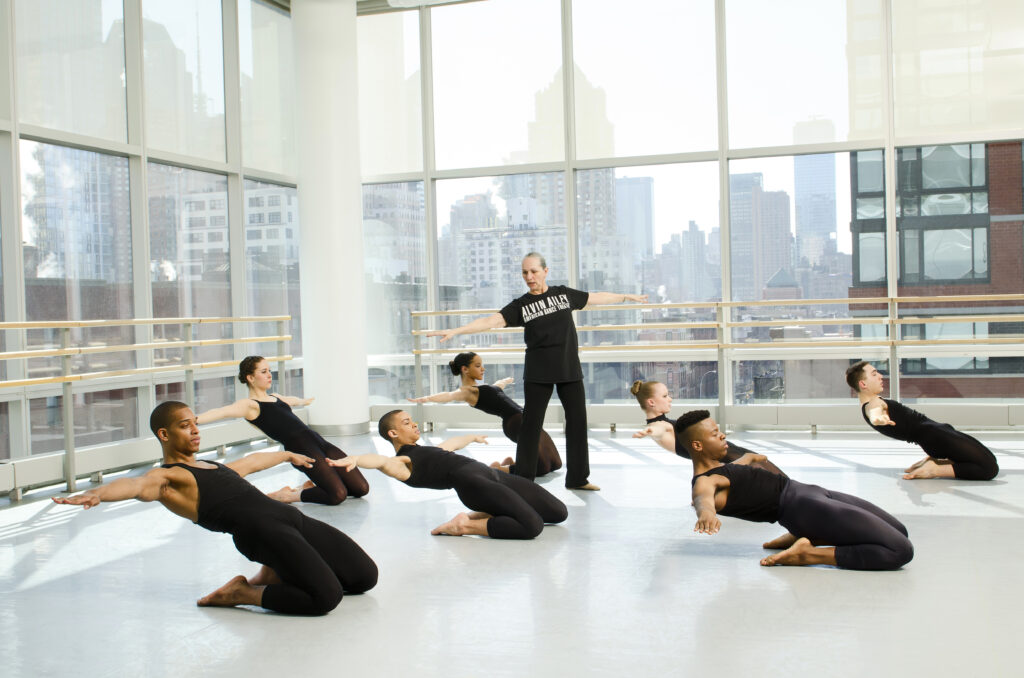
Systematizing and maintaining Horton’s teachings has been her life’s work. She believes in the results. “It’s a constructive technique that builds strong, flexible dancers,” she says, “and a beautiful technique. You can see that from the choreography that grew out of it,” which includes Bella Lewitzky and Alvin Ailey.
Below, she reflects on the special qualities of Horton, her own experiences as a dancer, and how she approaches her teaching.
You took your first Horton class when you were 12. What excited you about it?
The range of movement in Horton is fantastic. It’s all about how many different ways the body can move. When I was a ballet dancer, I knew how to do pirouettes, but with Horton I discovered I could turn upside down, or with my body in a sideways position with my leg up in the air and my arms out in a lateral T. That was really fun. I also had exciting teachers, like Joyce Trisler. She was a student at Juilliard at the time and she had just come from Horton’s school in Los Angeles. She was beautiful and young and dynamic and had legs that went over her head, and beautiful feet. And she was smart and funny. It was love at first sight.
You started teaching very young. How have your teaching and dancing informed each other?
I was about 14 when I started teaching class. I think teaching made me a better dancer, because as I was explaining things, I was understanding things in a more fundamental way than I would have if I had just been doing them. You’re explaining things to young people who may not know what the steps should look like. I have a good eye and I listen carefully and am usually able to answer students’ questions pretty well so they understand what we’re trying to achieve.
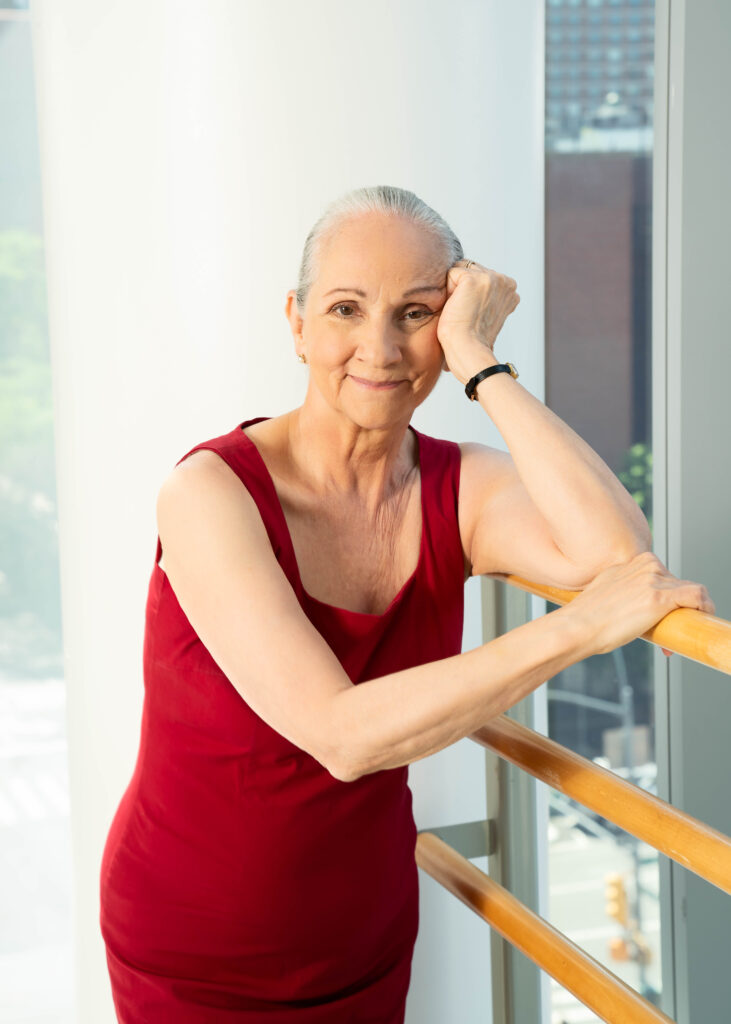
What is special about the Horton technique?
Martha Graham constructed a brilliant technique based on contraction and release; Doris Humphrey and Charles Weidman were doing rise and fall. They had very serious strictures about what they wanted the body to do. And Horton said, No, I don’t want to do that. I want to see how many different ways you can go. He also wanted to create a technique that was anatomically correct, unlike ballet. He wanted to make dance accessible to more people.
How did you develop your own approach or philosophy to teaching?
I had some really good examples. I had this contrast between Joyce Trisler and Jimmy Truitte and Marjorie Perce, all of whom had been in the Horton company. So I had these three perspectives of what Horton technique was about. Jimmy was the strictest—there was no deviation. Joyce was much more creative; she would take a study and enhance it in a very dancey way. And Marjorie Perce, with whom I co-authored my book, The Dance Technique of Lester Horton, was Alvin’s teacher. I’ve tried to teach the important material as carefully as I could, as I understood it.
What to you are the essential qualities of a Horton dancer?
A wide range of movement potential, going from very high to sideways to upside down. Strong musicality. A deep demi-plié will serve you well. And I think also this absolute joy of moving that Lester Horton emphasized.
What do you do when you encounter a dancer who is having trouble with some aspect of the technique, and getting frustrated?
The first thing you have to do is try to analyze why it isn’t working. Are they trying too hard? Are they not taking risks? Are they not really understanding the actual motion? If you can figure that out, you can help them.
Did you have a relationship with Alvin Ailey?
Yes, I started teaching at the school when Ailey was still alive. I remember a lovely moment when Alvin came in and we were doing a showing. His mother had come from Los Angeles to visit with him. He sat his mother right next to me. At one point, Alvin got up and started doing these incredible coordination studies he had learned from Lester Horton and his mother reached over, took my hand and asked, “Is he doing that right?”
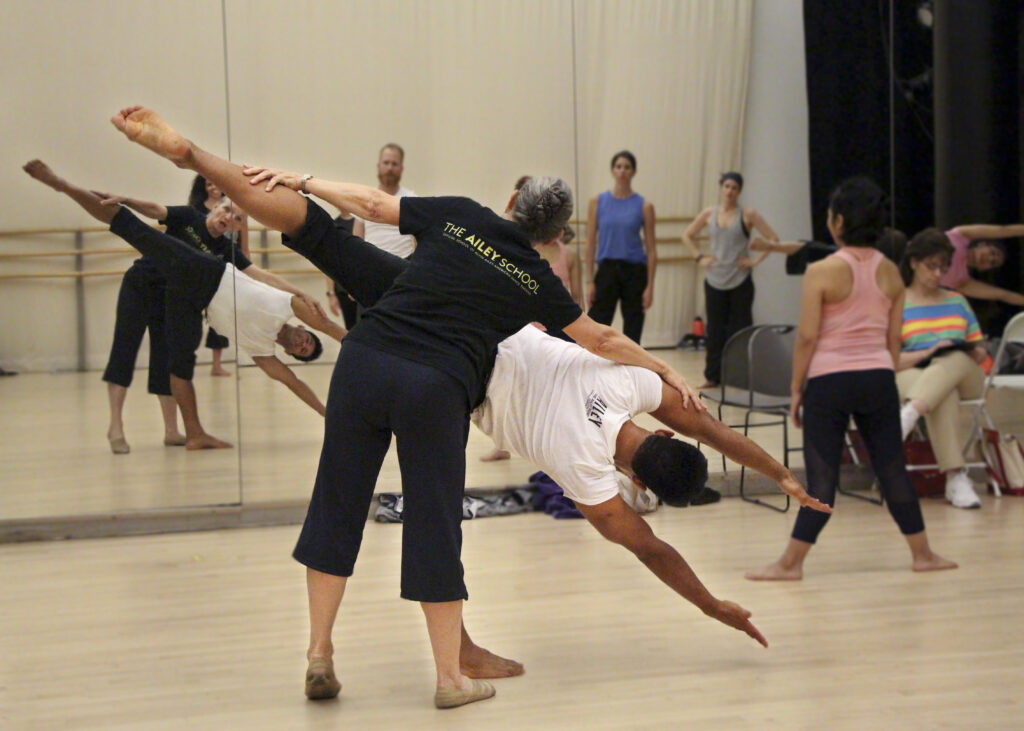
What do you think makes a good teacher?
You have to have a good eye so that you can see when someone is doing something incorrectly. You need to be able to not only show a movement but verbalize what should be happening. Consistency. Organization. I wrote a four-year syllabus for the Horton teachers at The Ailey Schoolbecause I wanted that consistent education from the very beginning, all the way to the really hard studies that come down the line. I thought that progression was really important.
What do you love most about teaching?
The students. Sharing this information with them. How smart they are. I cannot believe the facility that some of these students have now. I never had that kind of facility. They can do so much, sometimes too much. And they have such a range of interests—they can do Broadway, they can start a school. I think they’re more open to possibilities.
Profiles on the other four award winners are available here.
